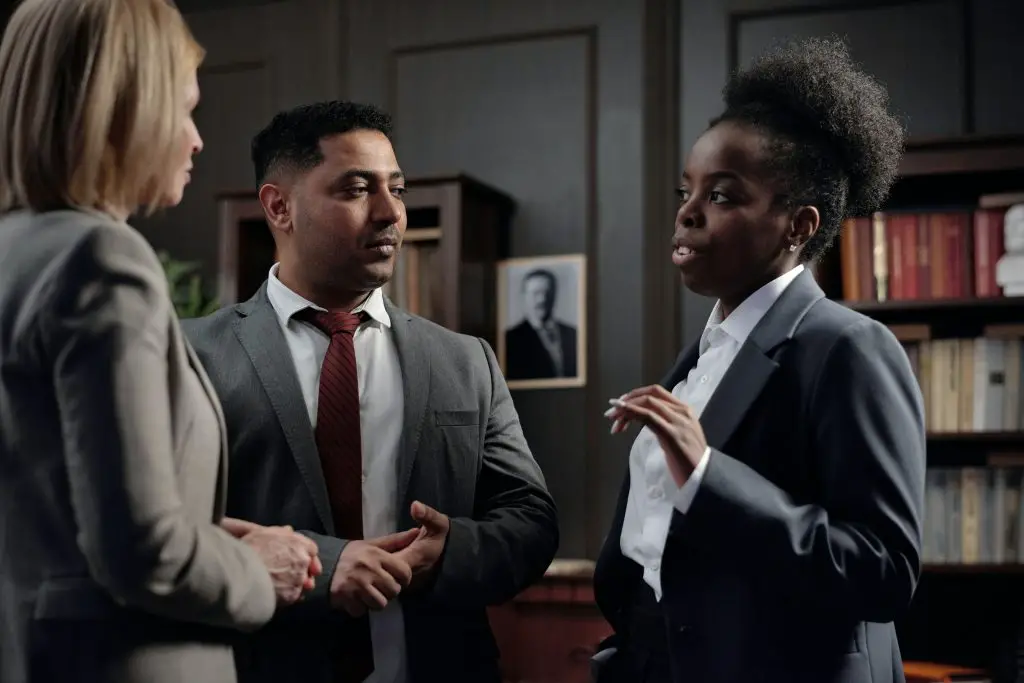Texting has become an indispensable part of our daily lives, allowing us to stay connected with friends, family, and colleagues. But are we truly making the most out of this powerful communication tool?
In this blog post, we will delve into the art of texting, discuss the benefits and challenges of text messaging, and provide practical tips on “how to communicate effectively in text messages.” Step into the world of texting mastery and elevate your communication game!
Key Takeaways
- Text messaging offers convenience and flexibility for both personal & business needs.
- Mastering the art of texting involves learning to communicate through concise messages, emojis & compassionate tone.
- Respect boundaries, timing & responsiveness when using text messaging to foster effective communication and strengthen relationships.

The Power of Text Messaging
Text messaging has transformed the way we communicate. With the rise of smartphones and various messaging platforms, sending a quick message, sharing a photo, or even engaging in a group chat has become easier.
Text messaging has numerous benefits, from increased intimacy and convenience to the potential for effective digital marketing campaigns.
However, text messaging also presents challenges, as the absence of body language, face-to-face communication, or even a video call, can sometimes lead to misinterpretation and confusion.
Harnessing the power of text messaging and communicating effectively requires a deep understanding of this unique communication method.
Texting offers incredible advantages, but we must remain aware of potential pitfalls and develop skills to navigate text-only communication conversations successfully.
This blog post delves into various aspects of texting, such as crafting clear messages and handling difficult conversations, providing practical tips for more effective and enjoyable text-based communication.
Benefits of Text Messaging
Text messaging has revolutionized both personal and professional communication. In personal relationships, texting offers a sense of closeness and immediacy that is hard to replicate through other means.
Unlike phone or video calls, text messages can be sent and received anytime without disrupting the recipient’s activities. This convenience makes texting an ideal way to stay in touch with friends and family across time zones.
In digital marketing, text messaging has proven highly effective in reaching customers directly and personally. With impressive opening and response rates compared to email marketing, text messages can grab customers’ attention and facilitate quick communication.
Businesses can also rely on text messaging for communication within virtual teams, providing a fast and convenient way to share information without the need for scheduling or coordination.
Challenges of Text Messaging
Despite its many benefits, text messaging also presents challenges that require practical communication skills.
One major challenge is the potential for misinterpretation and misunderstanding due to text messages’ lack of tone and facial expressions. For example, sending a long text message may lead to the recipient skimming through the content, potentially missing crucial details and altering the sender’s original intention.
Overcoming these challenges necessitates mindful consideration of our message presentation and the potential impact of our words and punctuation. Awareness of texting challenges and adopting effective communication strategies help minimize misunderstandings and facilitate smoother, more confident texting conversations.
Mastering the Art of Texting
Mastering the art of texting involves honing our ability to craft clear and concise messages while using emojis and tone appropriately.
By focusing on these aspects of texting, we can communicate our thoughts and feelings more effectively, leading to richer and more satisfying conversations.
The following sections delve into specific strategies and techniques for improving your texting skills and enhancing your communication experience. From crafting compelling messages to navigating tricky texting situations, we’ll provide practical guidance to take your texting game to the next level.
Crafting Clear and Concise Messages
The significance of crafting clear and concise messages in text communication is profound. By using simple language, avoiding jargon, and being direct and to the point, we can ensure that our message is understood and reduce the likelihood of confusion or misunderstandings.
One way to achieve clarity is by using capital letters appropriately to emphasize important points or indicate a sentence’s beginning.
In addition to clarity, brevity is also essential in effective text messaging. Long-winded messages may overwhelm the recipient or cause them to skim through the content, potentially missing important details. Keeping our messages concise and focused can convey our thoughts and intentions more effectively, ultimately leading to a more satisfying communication experience.
Using Emojis and Tone Appropriately
Emojis and tone are pivotal in conveying emotions and context in text messages. However, using them sparingly and appropriately is essential to avoid misinterpretation or confusion.
Emojis can help provide a sense of warmth and personality to our messages. Still, they should be used thoughtfully and respectfully, considering the context of the conversation and the tone of the message.
An example of appropriate use of emojis and tone might be adding a smiley face to a message to show that you are joking. On the other hand, using a frowning face to express anger might be considered inappropriate, especially in professional settings. By being mindful of emojis and tone, we can enhance our communication and ensure that our messages are received as intended.

Texting Etiquette
Proper texting etiquette is an essential aspect of effective communication. By being mindful of timing, responsiveness, and respecting boundaries, we can ensure that our text conversations are respectful and considerate.
In this section, we will explore the key elements of texting etiquette and provide practical guidance to help you maintain high courtesy and thoughtfulness in your text messaging.
Good texting etiquette improves communication quality and strengthens relationships with others. By demonstrating that we value the other person’s time and feelings, we can foster a sense of trust and connection in our text-based interactions.
Timing and Responsiveness
Mindfulness about when messages are sent and ensuring timely responses is integral to texting etiquette.
In professional contexts, responding within 24 hours during regular business hours is crucial, while in personal communication, a response within 24-48 hours is generally considered respectful.
However, it is also important to respect the recipient’s availability and not expect immediate responses. They may be occupied with other tasks or unable to text. Being understanding and patient can maintain a respectful and considerate texting environment.
Respecting Boundaries
Comprehending and respecting the boundaries of your communication partner is another integral facet of texting etiquette. This includes being mindful of the other person’s communication style, expectations, and comfort level with texting.
To respect the other person’s boundaries, it is important to consider the context of the conversation and adjust your texting style accordingly.
For example, maintain a formal tone in a professional setting and avoid using shorthand or emojis that your business associates may not appreciate. In personal communication, feel free to adopt a more casual tone but still strive for clarity and respectfulness.
Adapting to Different Communication Scenarios
Navigating various personal and professional relationships requires adaptation of our texting style to suit different communication scenarios.
By tailoring our approach to the context and preferences of the person we’re communicating with, we can ensure more effective and satisfying text-based interactions.
The following sections offer specific strategies for adapting your texting style to suit different communication scenarios, from professional to personal settings. You can confidently and effectively communicate through text in any situation by mastering these techniques.
Professional Texting
In work-related texts, maintaining professionalism is paramount. To achieve this, you should:
- Avoid using shorthand
- Ensure proper grammar and punctuation
- Keep messages concise
- Avoid using emojis in professional texts, as they can detract from the formal tone and may not be appreciated by your business associates.
While professional text messages should be clear and informative, they can also benefit from warmth and personalization. You can foster positive working relationships and facilitate effective communication with colleagues and clients by striking the right balance between formality and friendliness.
Personal Texting
In personal texting, a more casual tone is generally appropriate. However, striving for clarity and respectfulness in your messages is still essential. Be mindful of the other person’s preferences and comfort level with texting, and adjust your approach accordingly.
While personal text messages can cover many topics and emotions, it’s crucial to remain considerate and compassionate.
You can foster meaningful and satisfying personal connections through text messaging by being attentive to the other person’s feelings and needs.
Overcoming Common Texting Pitfalls
Further enhancement of your texting skills requires awareness of common texting pitfalls and how to overcome them. Two key challenges many people face in text messaging are misinterpretations and assumptions and dealing with difficult conversations.
The sections below present practical strategies for addressing these challenges to ensure effective text messaging communication. By mastering these techniques, you can confidently and skillfully navigate even the trickiest texting situations.
Misinterpretations and Assumptions
Misinterpretations and assumptions, common issues in text messaging, often stem from a lack of deep understanding or preconceptions. To avoid these pitfalls, it’s crucial to be aware of the potential for miscommunication and to clarify your message when necessary.
To ensure you communicate effectively, follow these steps:
- Ask questions to clarify any misunderstandings.
- Strive to understand the other person’s perspective.
- Be mindful of potential misinterpretations and assumptions.
- Foster open and honest communication.
By following these steps and seeking a community answer, you can have more satisfying texting experiences while utilizing free how-to resources.

Dealing with Difficult Conversations
Difficult conversations can be incredibly challenging in text messaging, where tone and context may be harder to convey. When faced with a difficult conversation, approach it with empathy and understanding, and be patient as the other person responds.
If the conversation becomes too intense or the other person is not responding, consider switching to a different communication method, such as a phone call or video chat.
By being flexible in your communication approach and prioritizing compassion and understanding, you can effectively navigate difficult conversations in text messaging.
Text Messaging Tools and Platforms
Beyond honing your texting skills, utilizing various text messaging tools and platforms can significantly enhance your communication experience and efficiency.
These digital services enable users to easily send and receive text messages, often offering additional features and capabilities to improve productivity and convenience.
Some popular text messaging platforms include WhatsApp, Facebook Messenger, and Slack, each offering unique features and benefits.
By exploring and experimenting with different text messaging tools and platforms, you can find the perfect solution to meet your communication needs and elevate your texting game.

Summary
In conclusion, texting is a powerful communication tool with immense potential for enhancing our personal and professional relationships.
By mastering the art of texting, practicing good etiquette, adapting to different communication scenarios, and overcoming common pitfalls, you can elevate your texting skills and enjoy more effective and satisfying text-based interactions. Embrace the power of texting and unlock a world of richer, more meaningful communication.
Frequently Asked Questions
How can I be a better Texter?
Be prompt with your replies, use varied responses, check the purpose of your reply before writing, add a bit of humor and fun elements like GIFs, memes, and emojis, flirt a little, and ask questions to keep the conversation going. This way, you can be a better texter with everyone love texting with.
What are 5 ways to communicate effectively?
Effective communication involves being an engaged listener, expressing yourself clearly, paying attention to nonverbal signs, controlling your emotions, and making intentional language choices.
What is good texting etiquette?
Be mindful of your response timing, keep your texts short and to the point, be aware of other people’s privacy, and only text when appropriate. Respect the conversation using compassionate language, and remember to apologize if you texted the wrong person.
What is the best way to handle a difficult conversation in text messaging?
Be compassionate and understanding, and switch to another communication method if the conversation becomes difficult.
How can I adapt my texting style to different communication scenarios?
Be mindful of the context and adjust your approach accordingly to accommodate the preferences of the person you are communicating with. A compassionate tone should be maintained throughout.
